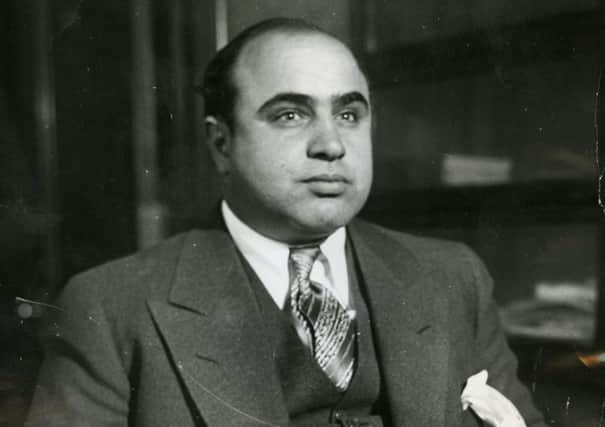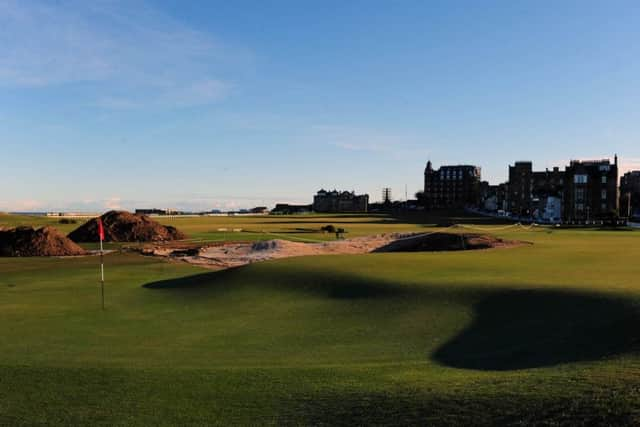Al Capone: His love for Scotland and secret golf trips


According to Billy Kay’s book The Scottish World: A Journey into the Scottish Diaspora, Capone and his associates effectively ran the golf clubs in the Windy City, and the Brooklyn native is said to have employed Scottish caddies to help improve his game - as well as hiding tommy guns and revolvers in golf bags for protection.
But Capone reportedly made secret trips to the home of golf in the 1920s, according to a descendant of the gangster.
Advertisement
Hide AdAdvertisement
Hide AdCapone is said to have sailed to Scotland under a false name and played rounds of golf at the Old Course in St Andrews, as well as at Turnberry in Ayrshire and Muirfield in East Lothian.


Local professionals were reportedly paid large sums of money to give Capone lessons - and presumably to keep quiet if they recognised their new pupil.
Capone’s grand-niece, Deirdre Marie Capone, wrote in a biography of the mobster titled Uncle Al Capone: The Untold Story From Inside His Family that he was ‘in love with the game [of golf] and with Scotland.’
Capone even bought a set of clubs in Scotland, asking the supplier to engrave his initials on the heads.
“I remember seeing his bag of clubs in the house in Miami where he lived. He told me they’d been made for him in Scotland,” Deirdre Marie recalled.


Deirdre Marie told St Andrews student newspaper The Saint in 2012 that Capone had enjoyed golf ‘for the challenge it gave him in strategy and critical thinking’.
“St Andrews and Scotland was the birthplace of golf. To visit and play there was more than a vacation,” she added.
Advertisement
Hide AdAdvertisement
Hide AdWhile in Scotland, Capone is thought to have met with businessmen and those concerned in the illegal supply of alcohol during the Prohibition era.
One of Capone’s contacts in Scotland was named as William C Miller-Thomas who, it has been claimed, was known for shipping bootleg whisky to waters just outside of US territory and helping Capone make his millions in the 1920s.
Local folklore has it that Miller-Thomas actually bought Capone’s car and had it transported to Scotland - and the vehicle is rumoured to be buried somewhere in the grounds of The Ley, an estate in Innerleithen in Peeblesshire.
But Miller-Thomas’s daughter Patricia Bertram has refuted those claims, insisting in a letter to The Scotsman in July 2015 that her father ‘never met Al Capone and certainly never bought a car from him, neither did he conduct any business with him or operate an illegal trade offshore in bootleg whisky during Prohibition’.
While Miller-Thomas did buy an American car and have it shipped to Scotland in the 1930s, Ms Bertram adds: “He did buy an American Buick in 1938 and shipped it over in his baggage on the Queen Mary. He sold it immediately after the war and it was last seen motoring down the drive, not being buried in the garden!”
But an additional letter, from Rev Jack Kellet, hints at there being more to the story than meets the eye.
Rev Kellet says: “When I was helping out during a vacancy in the parish church, an extremely trustworthy Innerleithen member who had been brought up in the area told me that, as a young girl, she had seen a photograph of Al Capone standing on the grand piano of a big house ‘up the granites’ - where The Ley is situated - signed by ‘Uncle Al’.”
Advertisement
Hide AdAdvertisement
Hide AdWe know that Capone spent time in Scotland thanks to Deirdre Marie’s biography, and travelled about the Central Belt to Ayrshire, St Andrews and East Lothian, so it’s not outrageous to imagine he might have extended his travels to the Borders area.
Does the mysterious ‘Uncle Al’ photograph suggest that the gangster did spend time in Peeblesshire? Or was the ‘trustworthy Innerleithen member’ the victim of a hoax?
Capone was finally arrested in the US by Eliot Ness and his men - The Untouchables - and jailed in 1931 for tax evasion. He was paroled in 1939 but had been battling syphilis and his mental health began to worsen. In January 1947, an increasingly ailing Capone suffered a stroke and, despite regaining consciousness and improving, contracted pneumonia and suffered a fatal cardiac arrest before dying on January 25th 1947 at the age of 48 - on Deirdre Marie’s seventh birthday.
Deirdre Marie added: ”Maybe if [Capone] had taken another trip to Scotland to relax, he’d have lived longer. I could see him buying a home in St Andrews.”